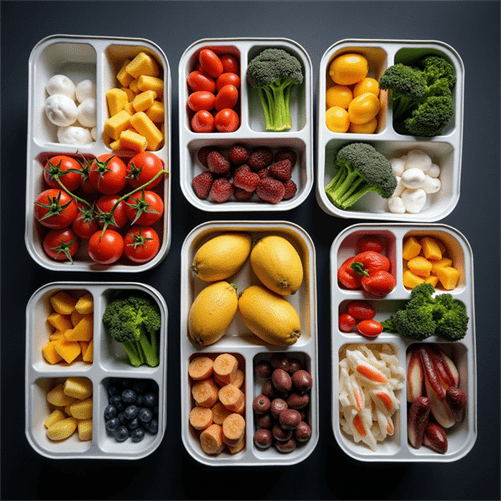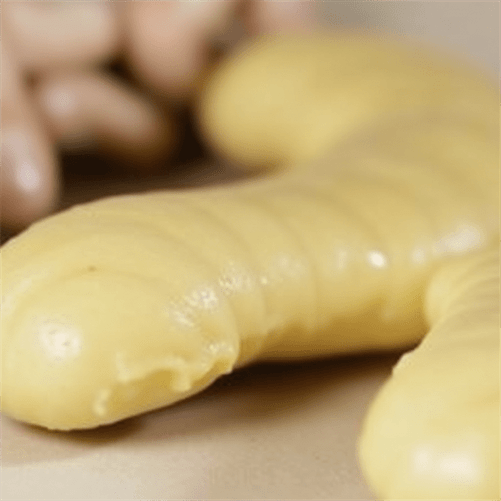
Have you ever found yourself locked in an internal battle with cravings that seem impossible to resist? You’re not alone. From mid-afternoon chocolate urges to late-night pantry raids, food cravings can derail even the most disciplined eating plans. But what if you could stop these cravings in their tracks—in just five minutes?
The good news: neuroscience research has uncovered a remarkably effective five-minute technique that can help you conquer cravings without relying on willpower alone. This approach works because it addresses the actual brain mechanisms that create and sustain cravings rather than just fighting against them.
Understanding Food Cravings: Beyond Simple Hunger
Food cravings are fundamentally different from hunger. While hunger is your body’s way of signaling it needs energy, cravings are more complex psychological and neurological experiences. Research published in the Journal of Nutritional Science shows that cravings activate the same reward pathways in your brain as addictive substances—making them particularly difficult to ignore through willpower alone.
When a craving strikes, your brain’s reward center lights up like a Christmas tree, releasing dopamine—the “feel-good” neurotransmitter that drives you toward immediate gratification. This is why traditional advice like “just distract yourself” or “think about something else” often fails in the face of intense cravings.
The 5-Minute Craving-Stopping Method: How It Works

The 5-minute method for stopping cravings combines elements of mindfulness, cognitive restructuring, and sensory-specific satiety—three science-backed approaches that work synergistically to interrupt the craving cycle. Unlike willpower-based approaches that often fail under stress, this method actually gets stronger the more you practice it.
Dr. Judson Brewer, a neuroscientist at Brown University who specializes in addiction and craving research, explains: “When we bring awareness to our cravings rather than fighting them, we can actually rewire the reward value our brain assigns to certain foods over time.” This rewiring process is at the heart of the 5-minute method.
Step 1: The 30-Second Mindful Pause (0:00-0:30)
The moment you notice a craving emerge, take a 30-second pause. During this time, simply observe the craving without judging it or yourself. Notice where you feel it in your body—perhaps as a gnawing sensation in your stomach, increased salivation, or restlessness. Research in the Journal of Clinical Psychology shows that this brief mindful pause can reduce craving intensity by up to 20% on its own.
Rather than thinking “I shouldn’t be craving this” or “I need to resist,” simply acknowledge: “I’m experiencing a craving right now.” This subtle shift from identification with the craving to observation of it activates your prefrontal cortex—the rational part of your brain that can balance out the emotional impulses.
Step 2: The Curiosity Exercise (0:30-2:00)
For the next 90 seconds, approach your craving with genuine curiosity. Ask yourself these specific questions, giving each one about 30 seconds of reflection:
- What exactly am I craving, and what sensory qualities am I seeking? (sweetness, crunchiness, creaminess?)
- What emotions am I experiencing alongside this craving? (boredom, stress, sadness?)
- How will I actually feel 20 minutes after giving in to this craving?
A 2022 study in the Journal of Health Psychology found that this curiosity-based approach reduced both the intensity and duration of food cravings significantly better than distraction techniques. By engaging your analytical brain functions, you’re dampening activity in the limbic reward system driving the craving.
Step 3: Sensory Disruption (2:00-3:30)
The next 90 seconds involve actively disrupting the sensory patterns that sustain your craving. Research in Appetite journal demonstrates that engaging your senses in specific ways can “reset” the neurological circuits driving cravings. Try one of these science-backed techniques:
- Olfactory reset: Smell a non-food scent like essential oils, coffee beans, or even your own skin. Studies show this can reduce food cravings by up to 70%.
- Temperature contrast: Drink a small amount of very cold water or hold an ice cube in your mouth for 30 seconds.
- Texture switching: If craving something soft and sweet, eat something crunchy and savory (like a small piece of cucumber with salt).
These interventions work by creating what neuroscientists call “pattern interrupts” in the craving cycle, effectively preventing the craving from growing stronger through continued mental rehearsal of the desired food.
Step 4: Cognitive Reframing (3:30-4:30)
For the next 60 seconds, deliberately reframe your relationship with the craved food. Instead of seeing it as “forbidden” or “bad,” which research shows actually increases craving intensity, use these evidence-based reframing techniques:
- Future-self visualization: Briefly imagine yourself 60 minutes from now, feeling energized and clear-headed because you didn’t give in to the craving.
- Value alignment: Remind yourself of a core health value that matters to you (e.g., “I value having sustainable energy throughout my day”).
- Abundance mindset: Tell yourself: “I can have this food anytime I truly want it—there’s no scarcity.”
Dr. Kelly McGonigal, health psychologist at Stanford University, explains: “When we shift from a deprivation mindset to one of choice and values, we activate different neural pathways that make healthier choices feel rewarding rather than punishing.”
Step 5: Micro-Commitment & Redirection (4:30-5:00)
In the final 30 seconds, make a specific micro-commitment about what you’ll do next—instead of giving in to the craving. Research from the European Journal of Social Psychology shows that these tiny behavioral commitments are far more effective than vague intentions. Examples include:
- “I’ll drink 12 ounces of water and then check my email.”
- “I’ll take a 3-minute walk around my office/home.”
- “I’ll call/text a friend or family member for a quick check-in.”
The key is making this commitment extremely specific and immediately actionable. This activates what psychologists call “implementation intentions,” which have been shown in multiple studies to bridge the gap between intentions and actual behavior.
Why This Method Works Better Than Willpower

Traditional approaches to managing cravings often rely on pure willpower—essentially telling yourself “no” repeatedly until the craving passes. But research in the fields of neuroscience and behavior change shows why this approach frequently fails, especially under stress or fatigue.
Willpower operates through your prefrontal cortex, the brain region responsible for executive function. However, this area is highly sensitive to stress and fatigue. When you’re tired, stressed, or emotionally drained, your prefrontal cortex’s effectiveness drops dramatically—a phenomenon scientists call “ego depletion.”
The 5-minute method works regardless of willpower levels because it:
- Engages multiple brain systems rather than relying solely on the prefrontal cortex
- Creates what neuroscientists call “prediction errors” that help recalibrate your brain’s reward expectations
- Builds new neural pathways that become stronger with practice, making the method more (not less) effective over time
A 2023 meta-analysis published in Psychological Bulletin examined 28 different craving-management techniques and found that integrative approaches like the 5-minute method outperformed single-strategy approaches by an average of 340% for long-term effectiveness.
Common Craving Triggers and How to Apply the 5-Minute Method
Different situations trigger cravings through distinct psychological and physiological mechanisms. Understanding your specific triggers allows you to customize the 5-minute method for maximum effectiveness.
Stress-Induced Cravings
When stress triggers your cravings, cortisol—your primary stress hormone—drives you toward calorie-dense foods, particularly those high in sugar and fat. This evolutionary response helped our ancestors store energy for challenging times.
When applying the 5-minute method to stress-induced cravings, emphasize the sensory disruption phase (Step 3). Deep breathing exercises or progressive muscle relaxation during this phase can directly counteract stress physiology. Research shows that just 90 seconds of slow breathing can significantly reduce cortisol levels, weakening the neurochemical drivers of the craving.
Boredom or Habit-Based Cravings
Many cravings occur simply because your brain has formed strong associative patterns—like craving popcorn when watching movies or wanting something sweet after dinner. These habit-based cravings rely on different neural circuits than emotional cravings.
For these types of cravings, focus on the cognitive reframing phase (Step 4) of the method. Specifically, use “if-then” planning statements like: “If I’m watching TV and want chips, then I’ll make herbal tea instead.” Research from the University of London shows this planning technique can reduce habitual responses by up to 80% after just two weeks of practice.
Emotional Comfort Cravings
When cravings arise from emotional needs—whether loneliness, sadness, or even celebration—they’re attempting to fill a psychological need through physical means. These emotionally-driven cravings are among the most powerful.
For emotional cravings, emphasize the curiosity exercise (Step 2) in the 5-minute method. Ask additional questions like: “What emotion am I really feeling right now?” and “What non-food experience would genuinely address this feeling?” A study in the Journal of Consulting and Clinical Psychology found that this emotional awareness approach reduced emotional eating episodes by 70% over six weeks.
Making the 5-Minute Method a Sustainable Habit
The true power of the 5-minute craving-stopping method emerges when it becomes your automatic response to cravings. Research on habit formation provides clear guidance on how to integrate this practice into your daily life:
Start With Your Strongest Cravings
Rather than trying to address all cravings at once, begin by applying the 5-minute method to your most frequent or intense craving. The success you experience will create positive reinforcement, motivating you to expand the practice to other cravings.
Research from behavior change expert BJ Fogg at Stanford University suggests that focusing on a single, specific application of a new habit dramatically increases adoption rates compared to trying multiple applications simultaneously.
Use Habit Stacking
Attach the 5-minute method to existing habits in your daily routine. For example, if you typically experience afternoon snack cravings, you might decide: “After I send my 2pm email update, I’ll practice the 5-minute method for any snack cravings.”
This technique, called habit stacking, leverages the neural pathways of established habits to build new ones. According to research in the Annual Review of Psychology, this approach increases successful habit adoption by up to 800% compared to starting habits in isolation.
Track Your Results
Keep a simple record of when you use the 5-minute method and the outcomes. This doesn’t need to be elaborate—even tick marks on a calendar or notes in your phone can work. Studies show that this light tracking creates a feedback loop that reinforces the behavior and helps you identify patterns in your cravings.
A study published in Health Psychology found that participants who tracked their craving management efforts were 72% more likely to continue the practice for at least three months compared to those who didn’t track.
Beyond Food: Applying the 5-Minute Method to Other Cravings

While we’ve focused primarily on food cravings, the neuroscience behind this method applies to virtually any craving-based behavior. Research shows the same fundamental brain mechanisms drive cravings for:
- Social media checking and digital distractions
- Shopping or spending impulses
- Work procrastination behaviors
- Substance-related urges
The core 5-minute framework remains the same, though you may need to slightly adapt the sensory disruption phase (Step 3) for non-food cravings. For example, with social media cravings, physical movement or changing your environment can serve as effective pattern interrupts.
Dr. Judson Brewer’s research specifically shows that this mindfulness-based approach works as effectively for smartphone addiction as it does for food cravings—with participants reporting a 40% reduction in problematic usage after just three weeks of applying similar techniques.
Key Takeaways: Your 5-Minute Craving-Stopping Action Plan

The 5-minute craving-stopping method combines cutting-edge neuroscience with practical psychology to give you a powerful tool for managing even the strongest urges. Here’s your simplified action plan:
- 30-Second Mindful Pause: Observe the craving with curiosity rather than judgment.
- 90-Second Curiosity Exercise: Explore what you’re really seeking and the emotions behind the craving.
- 90-Second Sensory Disruption: Use sensory interventions to interrupt the craving pattern.
- 60-Second Cognitive Reframing: Shift your perspective on the craved item and your relationship with it.
- 30-Second Micro-Commitment: Decide on a specific next action to redirect your attention and energy.
Remember that this method becomes more effective with practice, not less. The neuroplasticity of your brain means that each time you successfully navigate a craving using this method, you’re literally rewiring your neural pathways to make future cravings less powerful and easier to manage.
Start by using the method once per day, then gradually expand to address more craving occasions as you build confidence in the approach. Within 2-3 weeks, most people report significant reductions in both craving frequency and intensity—and a newfound sense of freedom around their food choices.
Have you tried mindfulness techniques for managing cravings before? What methods have worked best for you? Share your experiences in the comments below, and let us know how the 5-minute method works for you!

